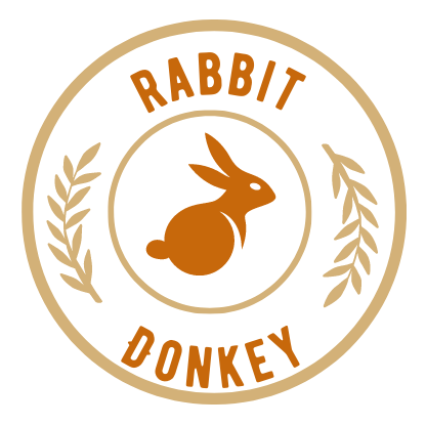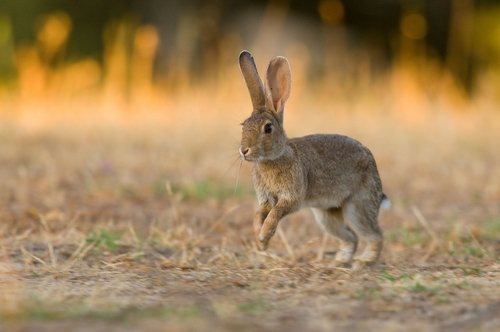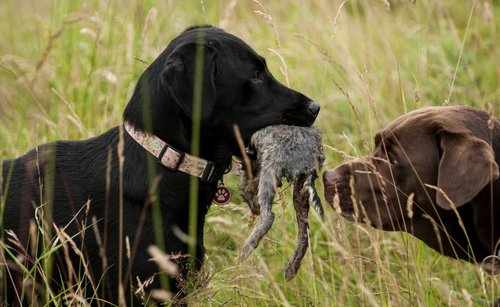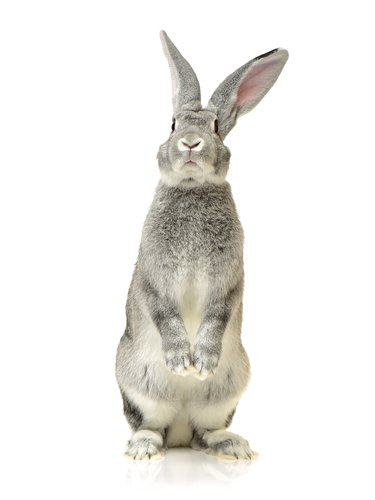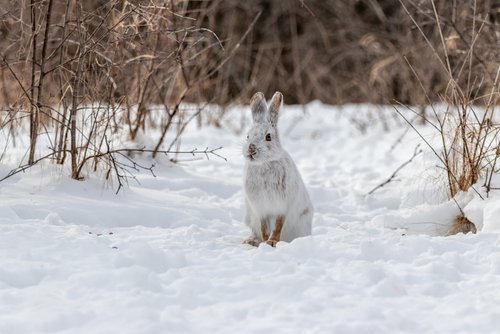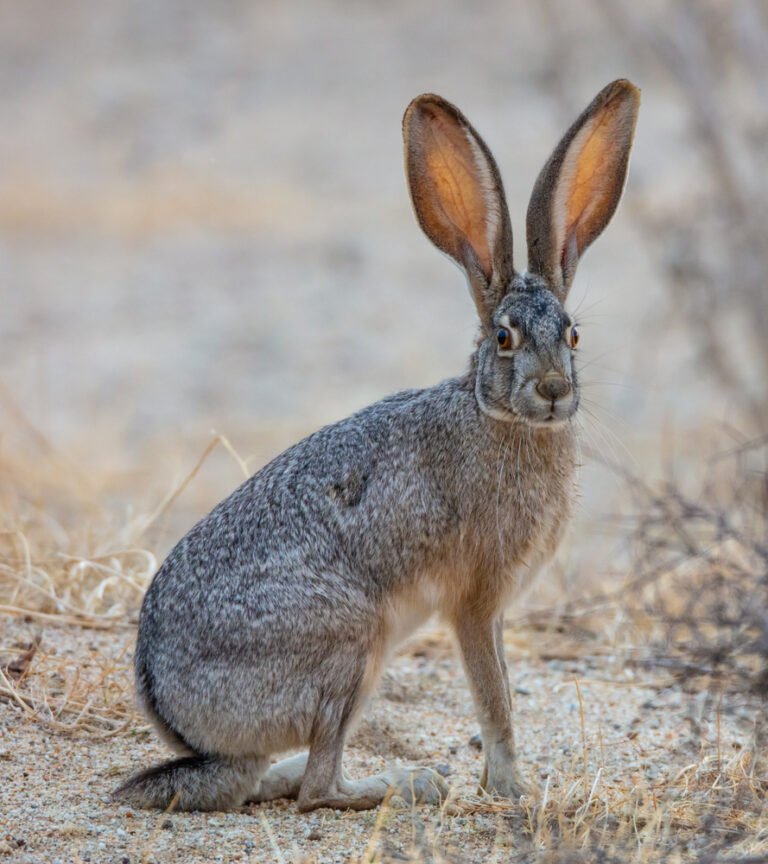Hop into the World of Rabbits: A Comprehensive Guide
Rabbits, those adorable creatures with their fluffy tails and twitching noses, are among the most captivating small mammals globally. From their distinctive physical features to their charming personalities, the rabbit has captivated our hearts for centuries.
Whether you’ve seen them hopping through fields or admired pictures of domestic rabbits online, these furry friends never fail to bring joy and wonder into our lives.
Common Characteristics and Physical Features
One glance at a rabbit, and you’ll notice some of its defining characteristics. These delightful creatures typically have long ears that stand upright, enabling them to detect even the slightest sound. Their large eyes provide excellent peripheral vision, allowing them to keep a watchful eye on any potential threats in their surroundings.
Moreover, rabbits possess powerful hind legs that allow them to leap great distances with ease. Another notable feature is their soft fur coat, which varies in color and texture depending on the breed or species.
From snowy white to rich brown, spotted or solid shades – domestic rabbits come in various colors and patterns that make each one unique. In addition to being visually appealing, rabbit fur is excellent insulation against cold weather.
A rabbit’s teeth are also worth mentioning – they have two pairs of sharp incisors continually growing throughout their lifetime. This adaptation helps them effectively grind down fibrous vegetation, such as grasses and hay, which comprise a significant portion of their diet.
But what truly sets rabbits apart is their endearing personality traits that often surprise those who interact with them closely. While some may think rabbits are timid or aloof animals, they can be affectionate and social when given proper care and attention.
These enchanting small mammals, known as rabbits, possess a captivating blend of physical features and personality traits that make them irresistible to many. From their long ears and expressive eyes to their soft fur and powerful hind legs, rabbits delight to observe and interact with.
In the upcoming sections, we will delve deeper into the world of rabbits, exploring their various species, habitat, behavior, diet, reproduction, communication methods, health concerns, and the special bond they share with humans. So get ready to hop on an exciting journey that unveils the fascinating secrets of these remarkable creatures!
Popular Domestic Rabbit Breeds
The Holland Lop: Cute and Cuddly Companions
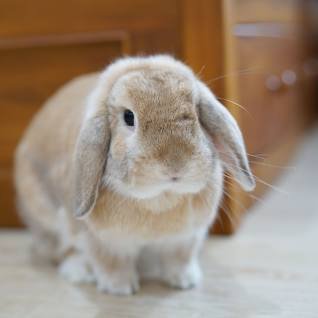
When it comes to adorable domestic rabbit breeds, the Holland Lop takes center stage. With their compact size and floppy ears, these little bundles of joy have stolen the hearts of many rabbit enthusiasts. Originating in the Netherlands, the Holland Lop is known for its sweet temperament and gentle nature, making them ideal companions for both adults and children alike.
These rabbits come in various colors, from solid shades to striking patterns, adding to their undeniable charm. Another popular breed among rabbit lovers is the Netherland Dwarf.
Despite their tiny stature, these pint-sized bunnies possess a big personality. Their small size makes them suitable for apartments or households with limited space.
With their exquisite round faces and short fur coats, Netherland Dwarfs are often described as the epitome of cuteness in rabbit form. Whether you choose a chestnut-colored bunny or an albino one with ruby-red eyes, these little bundles of joy will surely bring endless delight to your life.
Wild Rabbit Species Found Worldwide
While domestic rabbits steal our hearts with their adorable antics, we must not forget about their wild counterparts that roam freely across various parts of the globe. One such species is the European rabbit (Oryctolagus cuniculus), native to Spain and Portugal but has spread across many continents due to human introduction. These rabbits are known for their burrowing skills and often inhabit grasslands or open areas where they can find abundant food sources.
Closer to home in North America, we have cottontail rabbits (Sylvilagus spp.), a group consisting of several species known for their distinctive fluffy white tails that resemble balls of cotton. Found throughout different regions of North America, these agile creatures are adept at hiding from predators and are often spotted in meadows, fields, and even suburban neighborhoods.
Their ability to camouflage themselves within their surroundings is truly remarkable. Whether it’s the captivating charm of domestic rabbit breeds or the fascinating adaptability of wild rabbit species, these adorable creatures continue to captivate our hearts and minds.
From the Holland Lop with its cute floppy ears to the European rabbit displaying its burrowing prowess, rabbits never fail to spark joy and curiosity in our lives. So whether you adopt a domestic rabbit as a pet or observe wild rabbits in their natural habitat, these furry friends will always hold a special place in our hearts and remind us of the beauty of nature.
Rabbit Habitat and Behavior
The Wild Homes of Rabbits: Forests and Grasslands
When we think of rabbits, we often picture them hopping through open fields, munching on grass. While that image isn’t entirely inaccurate, it’s essential to note that rabbits have a broader range of natural habitats. In the wild, rabbits are found in various ecosystems, including forests and grasslands.
Forest-dwelling rabbits prefer areas with dense vegetation, such as shrubs and thickets, providing them with plenty of cover from potential predators. On the other hand, grassland-dwelling rabbits are experts at utilizing their surroundings to their advantage by using their impressive agility to navigate the tall grasses.
Burrowing and Hiding: Rabbit Adaptations for Survival
Rabbits possess extraordinary adaptations that help them survive in the wild. One of their most remarkable abilities is burrowing.
These fluffy creatures are skilled diggers and create intricate burrow systems called warrens. These underground dwellings serve multiple purposes – they provide shelter from harsh weather conditions, protect against predators like foxes or hawks, and act as hiding spots when danger approaches.
To ensure these burrows remain safe havens for themselves and their offspring, rabbits carefully excavate multiple entrances to allow various escape routes in case of emergencies. In addition to burrowing adaptations, rabbits possess other physical traits that aid their survival against predators.
If you’ve ever seen rabbit pictures or observed these adorable animals up close, you may have noticed their large eyes placed on the sides of their head – this gives them a wide field of vision to detect approaching threats quickly. Moreover, their long ears serve a dual purpose; not only do they pick up sound vibrations efficiently, but they also help regulate body temperature by dissipating excess heat.
Social Behavior: Hierarchy in Rabbit Colonies
Contrary to popular belief, rabbits are not entirely solitary creatures. They exhibit fascinating social behavior and often live in colonies or groups known as warrens. Within these communities, a hierarchy is established based on dominance and submission, with the most dominant rabbit taking the lead.
This hierarchy determines access to resources such as food and shelter. Interestingly, establishing dominance is often done through non-aggressive means like body language displays rather than physical confrontation.
Rabbits communicate within their colonies using various signals. For example, if a rabbit wants to assert dominance, it may thump its hind legs on the ground as a warning signal to others.
Conversely, when rabbits feel threatened or scared, they may flatten their bodies against the ground or freeze to avoid detection by predators or dominant colony members. Understanding the natural habitats and behaviors of rabbits provides valuable insights into their lives and helps us appreciate their remarkable adaptations for survival.
Whether in forests or grasslands, these agile creatures have mastered burrowing techniques for protection while engaging in complex social hierarchies within their colonies. Appreciating the beauty of rabbits extends beyond adorable rabbit pictures; it lies in recognizing how they navigate their environments and interact with one another in remarkable ways.
Rabbit Diet and Digestion
Herbivorous Nature of Rabbits’ Diet
When it comes to food, rabbits are true herbivores. They have a natural inclination towards consuming plant-based materials. In the wild, their diet consists primarily of grasses and other vegetation they can find in their habitat.
This herbivorous nature is also evident in pet rabbits, where a well-balanced diet is crucial for their overall health and well-being. Understanding the herbivorous nature of rabbits’ diet is essential for providing them with the appropriate nutrition.
Their digestive system has evolved to process and extract nutrients from plant material efficiently. Unlike carnivores or omnivores, rabbits cannot digest meat or other animal products effectively.
Therefore, it’s important to focus on providing a variety of plant-based foods that fulfill their nutritional requirements.
Types of Food Consumed by Rabbits (e.g., Hay, Vegetables)
Hay forms an integral part of a rabbit’s diet as it serves as the primary source of fiber. It aids in maintaining healthy digestion and dental health by wearing down their continuously growing teeth. High-quality Timothy hay or grass hay should be available at all times for your domestic rabbit.
In addition to hay, fresh vegetables play a significant role in fulfilling a rabbit’s dietary needs. Leafy greens like romaine lettuce, spinach, kale, and herbs such as cilantro or parsley provide essential vitamins and minerals while adding variety to their meals.
However, it is important to introduce new foods gradually into your rabbit’s diet to avoid digestive upsets. While rabbits often enjoy fruits due to their sweetness, they should be given sparingly due to their high sugar content.
Treats such as slices of apple or small pieces of carrots can be provided occasionally but shouldn’t make up more than 10% of their overall diet.
Unique Digestive System with Specialized Organs (Cecum)
One fascinating aspect of a rabbit’s digestive system is its unique structure, which allows them to extract maximum nutrition from their plant-based diet. Rabbits possess a large, specialized organ called the cecum, where the small and large intestines meet. The cecum acts as a fermentation chamber where fiber-rich foods like hay and vegetables go through an additional stage of digestion.
The cecum contains beneficial bacteria that break down complex carbohydrates present in the food. This process produces essential nutrients like proteins and vitamins, which are then absorbed by the rabbit’s body.
The digested material is formed into soft fecal pellets known as cecotropes, which rabbits consume directly from their anus to obtain these vital nutrients. Understanding rabbits’ herbivorous nature and providing them with a well-rounded diet is crucial for their overall health and happiness.
A combination of high-quality hay and fresh vegetables should form the foundation of their daily meals. Additionally, recognizing the unique digestive system of rabbits, especially the role played by the cecum in nutrient extraction, helps us appreciate their intricate adaptation to a plant-based diet.
Mating Rituals and Courtship Behaviors
The Whiskers of Love: Romance in the Rabbit Kingdom When it comes to romance, rabbits have their unique way of wooing each other.
The courtship behavior of rabbits is a fascinating display of affection and connection. To start the courtship process, male rabbits, known as bucks, often engage in an endearing behavior called “circling.” They will excitedly run circles around the female rabbit or doe, showcasing their enthusiasm and interest.
This circling behavior can continue for several minutes until the buck feels confident enough to approach the doe. Once the buck gets closer to the doe, he will nudge her gently with his nose or perform little hops around her as a way to showcase his affection.
If the female rabbit reciprocates these advances positively, she may respond by performing playful jumps or even engaging in a friendly chase. It’s incredible how these little gestures mirror human courtship rituals!
Gestation Period and Birth Process for Baby Rabbits (Kits)
From Fluffy Bellies to Pitter-Patter Feet: The Miracle of Rabbit Birth After successful mating, a litter of baby rabbits, affectionately called kits, is coming!
The gestation period for rabbits typically lasts between 28 and 35 days—although it can vary slightly depending on the specific breed. During this time, the pregnant doe prepares a warm nest by pulling out fur from her belly and lining it with straw or hay.
When it’s time for birth, expectant mother rabbits often choose nighttime as their moment to bring new life into the world. With minimal disturbance from humans or other animals during this precious time, they feel more secure in ensuring their kits’ safety.
The birth process itself is relatively quick but magical to witness. One by one, the doe will deliver each baby rabbit, usually within intervals of 10 to 15 minutes.
As the kits emerge, they are covered in a protective membrane that the mother promptly removes by licking them clean and stimulating their breathing. Soon enough, these adorable little bundles of fur will start exploring their new surroundings.
Development Stages from Birth to Adulthood
From Tiny Furballs to Graceful Hoppers: The Journey of Rabbit Growth The development stages of baby rabbits are filled with awe-inspiring transformations as they grow from fragile newborns into lively adults.
In their first week, the kits are born blind and completely dependent on their mother for warmth and nourishment. They spend most of their time nestled together in the nest box, taking frequent breaks for nursing sessions.
Around two weeks old, the kits’ eyes start opening, revealing their innocent gazes to the world for the first time. As they continue to mature, they become more active and curious about their surroundings, venturing outside of the nest box more often.
By three weeks old, they begin nibbling on solid foods like hay and pellets while still relying on their mother’s milk. At around four to five weeks old, tiny hops become bolder ventures as young rabbits learn to explore further distances from home—a testament to growing independence.
Between eight and twelve weeks old, these once-helpless kits blossom into fully-fledged adult rabbits ready to embrace life’s challenges with boundless energy and furry charm. Whether you’re captivated by rabbit pictures or admire these adorable creatures that enhance our lives with fluffy love, understanding their reproduction process and growth journey only deepens our appreciation for them.
Communication in Rabbits
A. Vocalizations used by rabbits to communicate with each other rabbits may seem like quiet creatures. Still, they have a wide range of vocalizations to express their emotions and communicate with each other. One common sound is a soft purring noise, which indicates contentment and relaxation. It’s similar to a cat’s purr and often happens when rabbits are petted or groomed. On the other hand, if you hear your rabbit making a loud shriek or screaming sound, it’s a sign of fear or extreme pain, indicating that something is seriously wrong. Another vocalization is the grunt, which rabbits use as a warning sign to tell others they don’t appreciate being bothered or handled roughly. It’s like their way of saying “back off!” Additionally, rabbits can growl or grumble when they feel threatened or agitated. Interestingly, rabbits also have different sounds for expressing pleasure or anticipation regarding food. They might emit high-pitched squeals and even do little hops of joy when they see their favorite treats coming their way!
B. Body language signals exhibited by rabbitsWhile vocalizations play an essential role in rabbit communication, body language signals are equally important for understanding their emotions and intentions. Rabbits have an array of subtle movements that can speak volumes about how they’re feeling. One common body signal is thumping their hind legs against the ground. This behavior is usually seen in wild rabbits as a warning sign to alert others of potential danger nearby. If your domestic rabbit starts thumping indoors without any apparent threat, it might be due to feeling startled or stressed. Rabbits also use their ears as an essential part of communication. When relaxed and content, their ears are upright but not overly tense. However, if the ears are flattened against the back of their head, it typically means they’re scared or anxious. Additionally, rabbits can rotate their ears independently to locate better the source of a sound, which is an impressive adaptation. Furthermore, body postures are crucial in rabbit communication. When a rabbit stretches out on its side or back with its belly exposed, it indicates complete relaxation and trust. Conversely, if a rabbit crouches low to the ground with its body tense and ready to flee, it’s a sign of fear or danger.
C. Scent marking as a form of communication marking is another fascinating way that rabbits communicate with each other and establish territory boundaries. Rabbits have scent glands located under their chins and around their anus, which produce unique odors that they use for various purposes. Male rabbits often mark their territory by spraying urine on objects or surfaces within their environment. This behavior is more commonly observed in intact (non-neutered) males during hormonal periods when trying to assert dominance. Aside from urine marking, rabbits also have special scent glands on the bottom of their feet. When they hop around and leave scent trails behind them while exploring their surroundings, it acts as a way to communicate with other rabbits who come across those scents later. Additionally, female rabbits might leave subtle scents behind during courtship rituals to attract potential mates. Males can detect these scents through the specialized Jacobsen organ on the roof of their mouth. Understanding these forms of communication is vital for rabbit owners as it helps interpret their pets’ needs and emotions more accurately. By paying attention to vocalizations, body language signals, and scent-marking behaviors displayed by our furry friends, we can ensure better care and create a deeper bond with our adorable companions.
Health Issues in Rabbits
Common diseases affecting pet rabbits
Pet rabbits, like other animals, are susceptible to certain health issues that owners must be aware of. Recognizing the signs and symptoms of common rabbit diseases is crucial for their well-being.
One prevalent condition among domestic rabbits is dental problems. Rabbit teeth grow continuously, and if not properly worn down through chewing on fibrous food like hay, it can lead to dental malocclusion or overgrowth.
This can cause pain, difficulty in eating, and even abscesses. Another common health concern for pet rabbits is gastrointestinal stasis or GI stasis.
This occurs when the digestive system slows down or stops working altogether. It can be caused by various factors, such as a poor diet lacking fiber, stress, dehydration, or dental issues that prevent proper chewing.
Symptoms include decreased appetite, reduced fecal output, bloating, and lethargy. Additionally, respiratory infections are also a prevalent issue among domestic rabbits.
These infections can be bacterial or viral and often result from exposure to drafts or poor ventilation in their living environment. Signs of respiratory problems include sneezing, nasal discharge, difficulty breathing, and loss of appetite.
Preventive care measures for maintaining rabbit health
To ensure good rabbit health and minimize the risk of diseases mentioned above and others like parasite infestation (fleas and mites) or obesity-related ailments (due to improper diet), proper preventive care is essential. Providing a well-balanced diet rich in high-quality hay is key as it helps maintain healthy digestion while also promoting the natural wear of teeth.
Regular veterinary check-ups are crucial for keeping your pet rabbit healthy. A veterinarian familiar with rabbit care will conduct thorough examinations, including checking teeth alignment and length and listening to the heart and lungs to catch any underlying issues early on.
Maintaining a clean and safe living environment is vital to prevent respiratory infections. Adequate ventilation, avoidance of drafts, and regular cleaning of the rabbit’s enclosure can reduce the risk of these respiratory ailments.
Veterinary treatments available for various ailments
When treating rabbit health issues, it is important to consult a veterinarian with experience in rabbit care. Dental problems often require veterinary intervention to trim or file down overgrown teeth and treat associated infections or abscesses.
This may involve dental procedures performed under anesthesia. For gastrointestinal stasis, prompt veterinary attention is necessary as it can be life-threatening if left untreated.
Treatment usually involves resolving the underlying cause (such as improving diet) and providing supportive care, such as pain medication, fluids, and medications that promote gut motility. Respiratory infections are typically treated with antibiotics prescribed by a veterinarian.
It is essential to administer the medication as directed for the full course to ensure complete recovery. Remember, prevention and early detection are key to maintaining your pet rabbit’s health.
By observing their behavior closely and providing proper nutrition and preventive care, you can minimize the risk of common diseases and ensure your furry friend lives a happy and healthy life. Note: The usage of HTML tags in this response is solely for formatting purposes on this platform and may not function as actual HTML code outside this context.
Human Interaction with Rabbits
Domestication history of rabbits as pets
Rabbits have a long and fascinating history of being domesticated as pets. The practice of keeping rabbits as companions dates back to ancient times, where they were initially kept for their fur and meat.
However, over time, their adorable appearance and gentle nature made them popular household pets. The Romans were among the first to appreciate rabbits as domesticated animals, often keeping them in well-designed hutches within their homes.
This trend spread throughout Europe during the Middle Ages and Renaissance. In the 18th century, rabbits became even more popular as pets when selective breeding resulted in various breeds with different sizes, colors, and fur types.
Today, there are numerous rabbit breeds specifically bred for companionship purposes. From the tiny Holland Lop to the majestic Flemish Giant, each breed has unique characteristics that suit different lifestyles and preferences.
Role of rabbits in folklore, literature, and popular culture
Rabbits have played significant roles in folklore, literature, and popular culture across various civilizations throughout history. In many cultures, they are associated with fertility due to their rapid reproduction rate. This symbolism can be found in ancient myths and legends from Egypt to Japan.
In literature, perhaps one of the most iconic rabbit characters is Peter Rabbit, created by Beatrix Potter in her beloved children’s books. Peter Rabbit’s mischievous adventures continue to captivate young readers worldwide even after more than a century since his creation.
Rabbits have also become pop culture icons through various media formats, such as cartoons and movies. From Bugs Bunny’s witty personality to the adorable Thumper from Disney’s “Bambi,” these fictional rabbit characters have left lasting impressions on audiences young and old.
Rabbit-related activities like showing, breeding,
For those with a deep fascination for rabbits, several rabbit-related activities can bring joy and fulfillment. One such activity is rabbit showing, where owners exhibit their rabbits in competitions based on breed standards.
These shows provide an opportunity to showcase the beauty and unique qualities of different rabbit breeds. Breeding rabbits is another popular activity among enthusiasts.
Responsible breeding ensures the preservation of specific breeds and improves their overall health and temperament. It requires careful planning, knowledge of genetics, and commitment to maintaining high standards of care for both parent rabbits and their offspring.
Additionally, many rabbit lovers enjoy participating in online communities to share stories, tips on rabbit care, and adorable pictures of their furry companions. These platforms foster a sense of belonging among like-minded individuals who share a passion for these delightful animals.
Conclusion
Rabbits have become more than fluffy companions; they have ingrained themselves into human culture through centuries of domestication. From being revered as symbols of fertility in ancient folklore to captivating readers through literature and entertainment media today, rabbits continue to leave an indelible mark on our hearts. The bond between humans and domestic rabbits has only grown stronger with our understanding of proper care and responsible breeding practices.
Their endearing nature brings joy and happiness into our lives while teaching us about compassion and responsibility. So whether you’re captivated by their historical significance or enjoy snuggling up with a cute bunny friend after a long day, rabbits will always be cherished for their unique place in human society.
